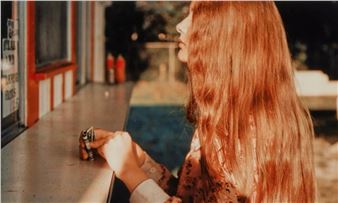The American Impressionists in the Garden
“The museum is pleased to host The American Impressionists in the Garden,” states museum Executive Director Todd D. Smith. “The exhibition is the first opportunity we’ve had to look at one of the most fascinating and beautiful subject matters that the American Impressionist painters explored. We hope that our visitors take away a greater appreciation for the art of gardening and the influence it had on the Impressionist movement here in America.”
At the end of the nineteenth century, American artists demonstrated a preference for gardens as artistic motifs as well as a growing appreciation of the art of gardening itself. The range of color and the variation in form and silhouette made the garden a compelling subject for a large number of painters inclined toward the Impressionist style. Early twentieth century America witnesses a mania for the garden, and the interest in the art of gardening dominated many aspects of domestic life. Garden clubs, magazines, floral displays and a multitude of other activities associated with flowers and the garden permeated American life. Publications and articles appeared offering gardening advice for Americans while also asserting that the art of gardening paralleled the art of painting.
The exhibition is broadly divided into three topical groups: “European Gardens” represents garden images created by Americans abroad, especially in Giverny, France, which captivated so many artists. Mary MacMonnies, for example, rented an old monastery in Giverny, developed the gardens, and produced several paintings of them. Works by Childe Hassam and Ernest Lawson, on the other hand, depict more urban gardens in and around Paris, providing a contrast to the images of Giverny. “Gardens in America” explores the many known gardens painted by American impressionists, including the art colonies of Old Lyme, Connecticut and Cornish, New Hampshire, and various gardens, from Charleston, South Carolina, to California. “Garden Sculpture,” a third section, was an essential element of garden design, and a few select examples of garden statuary will document this important three-dimensional feature within the garden environment.

Recommended for you
“The museum is pleased to host The American Impressionists in the Garden,” states museum Executive Director Todd D. Smith. “The exhibition is the first opportunity we’ve had to look at one of the most fascinating and beautiful subject matters that the American Impressionist painters explored. We hope that our visitors take away a greater appreciation for the art of gardening and the influence it had on the Impressionist movement here in America.”
At the end of the nineteenth century, American artists demonstrated a preference for gardens as artistic motifs as well as a growing appreciation of the art of gardening itself. The range of color and the variation in form and silhouette made the garden a compelling subject for a large number of painters inclined toward the Impressionist style. Early twentieth century America witnesses a mania for the garden, and the interest in the art of gardening dominated many aspects of domestic life. Garden clubs, magazines, floral displays and a multitude of other activities associated with flowers and the garden permeated American life. Publications and articles appeared offering gardening advice for Americans while also asserting that the art of gardening paralleled the art of painting.
The exhibition is broadly divided into three topical groups: “European Gardens” represents garden images created by Americans abroad, especially in Giverny, France, which captivated so many artists. Mary MacMonnies, for example, rented an old monastery in Giverny, developed the gardens, and produced several paintings of them. Works by Childe Hassam and Ernest Lawson, on the other hand, depict more urban gardens in and around Paris, providing a contrast to the images of Giverny. “Gardens in America” explores the many known gardens painted by American impressionists, including the art colonies of Old Lyme, Connecticut and Cornish, New Hampshire, and various gardens, from Charleston, South Carolina, to California. “Garden Sculpture,” a third section, was an essential element of garden design, and a few select examples of garden statuary will document this important three-dimensional feature within the garden environment.
Artists on show
Contact details


 ARTISTS
ARTISTS















